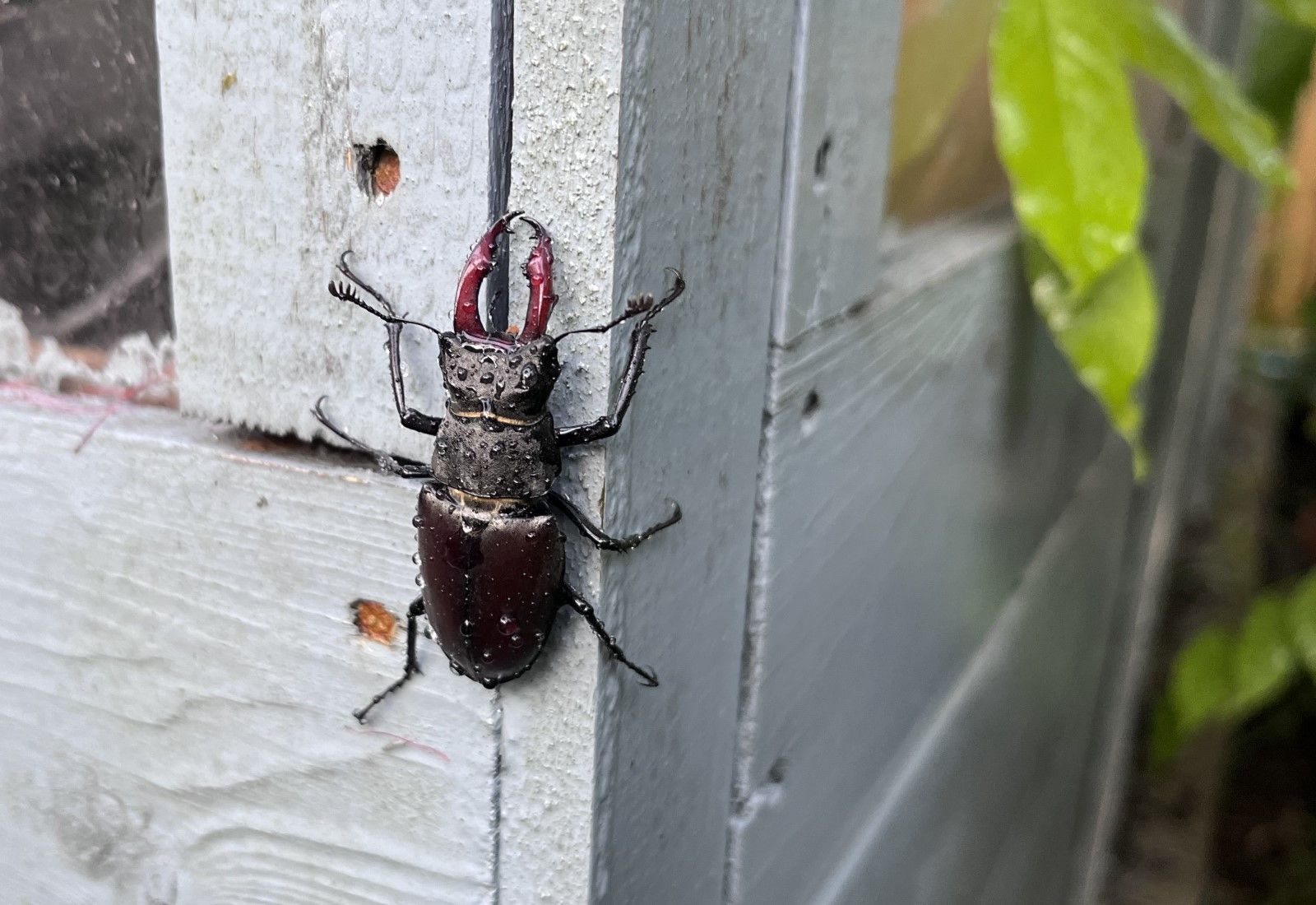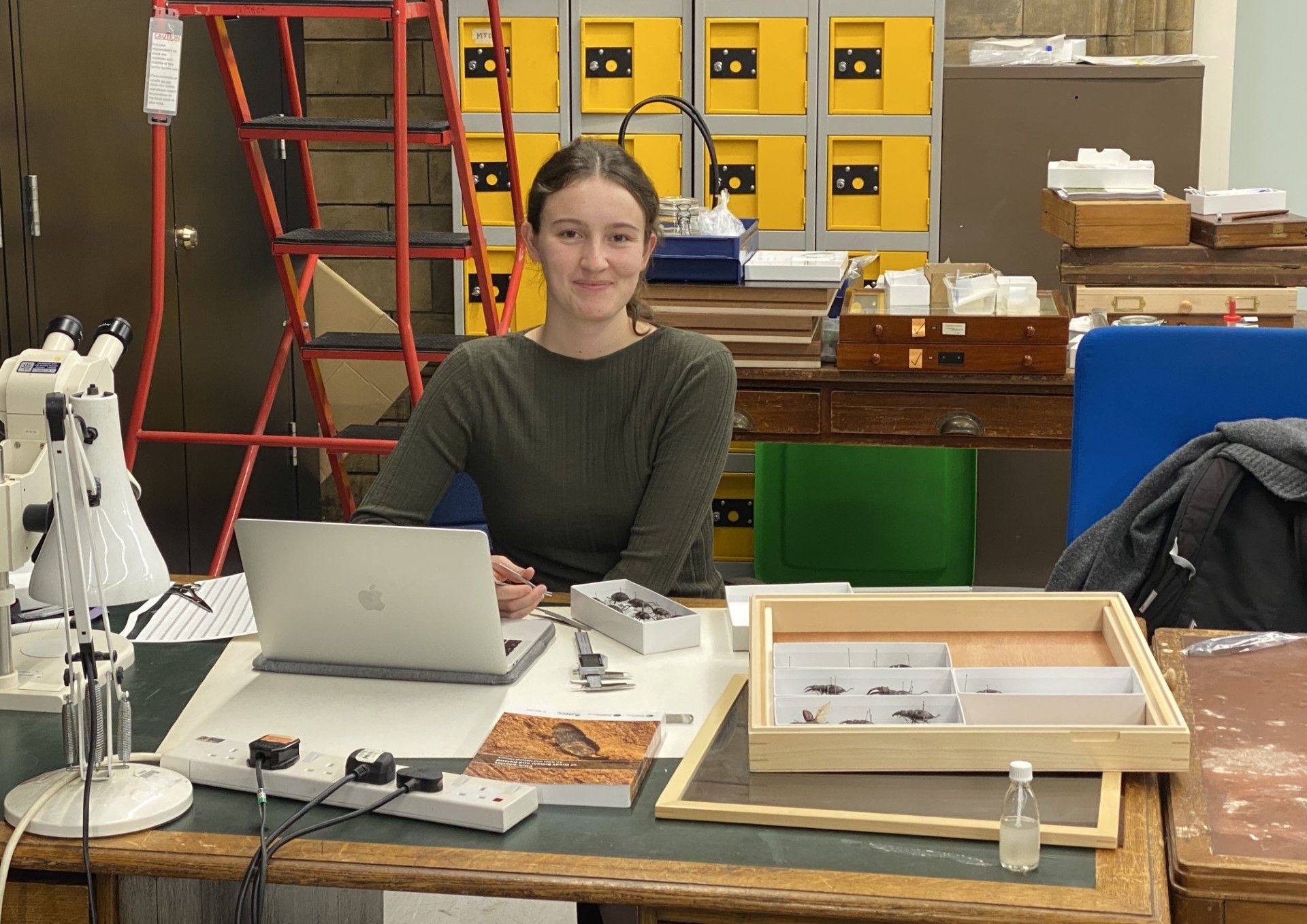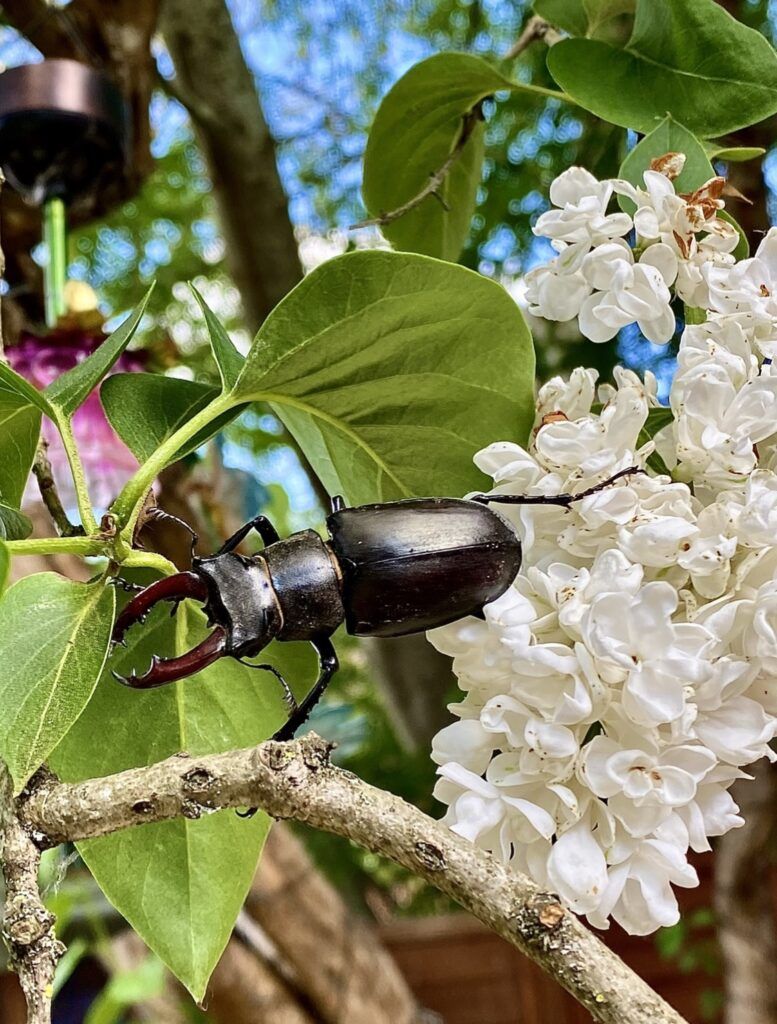Records of stag beetles then and now: mapping change for conservation

PTES has been running the Great Stag Hunt since 1998. Now we want to analyse the data to learn about stag beetle range in Britain.
Stag beetles Lucanus cervus are our largest land beetle. Males can be up to 7.5cm in length, adorned with oversized jaws looking like antlers, that give the beetle its name. Males use their antlers in courtship displays and to wrestle rival males for the attentions of females.
These magnificent insects are still widespread in much of southern England but are thought to have largely disappeared from many areas, including south Wales, the Dee, Cumbria, and elsewhere. Changes in their distribution are poorly described and and their conservation status isn’t fully understood.
Stag beetles are in the Red Data lists of several countries, although have little protection in the UK. Their conservation is important in the wider context of saproxylic beetles (those species that eat decaying wood) and their role as indicators of forest health.
PTES intern Freya Read is collaborating with PTES and the Natural History Museum to analyse current records of stag beetles and historical specimens going back 250 years to understand better how the species’ range in Britain has changed over time. This work, she hopes, will improve conservation efforts in Britain and internationally.
PTES’ Great Stag Hunt
In 1998, PTES organised the first Great Stag Hunt. The second and third Great Stag Hunts took place in 2002 and 2006/7, and records have been collected annually since 2015. Today, there are well over a hundred thousand records and in recent years many have included a photograph. In 2024, over half of the 16,000 records submitted had an attached image and each one has to be confirmed as a stag beetle.
Freya will verify the records from 2024 and assess the potential to use automated AI image recognition in the future. This will involve looking at existing image recognition software and at the data held in the records, and outlining the necessary steps towards an automated system. Quite a task!
Museum collections
The Natural History Museum in London has around 10 million insect specimens in its collections, dating back to the late 1700s, including the collection of 32,000 stag beetles that belonged to the famous Belgian entomologist, Hugues Bomans. The collections contain information about where and when specimens were collected, and this has never been analysed for stag beetles.
Freya is extracting and interpreting this historical data and comparing it with recent Great Stag Hunt records to look at how stag beetle range might have changed and to identify possible causes such as habitat loss and climate change.

Thank you to the Elgol Fund for Nature for their generous support of our internship programme.


